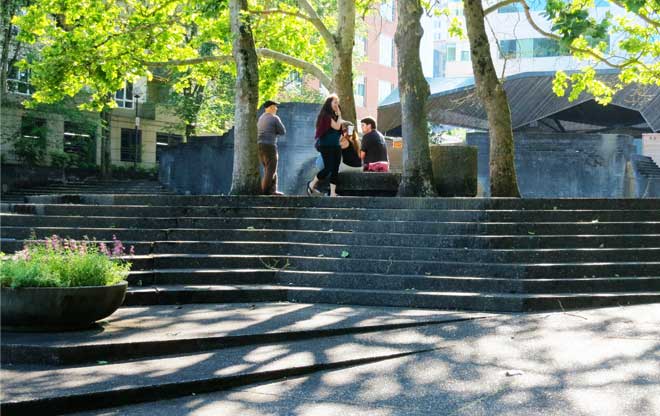
Master of Geometrical Form
Lovejoy Plaza is a grand environmental sculpture of terraced concrete on three-quarters of an acre. Steps, platforms, a pool, and a small grove frame the iconic fountain, all constructed using standard 2 inch by 6 inch forms. Halprin was a master of creating compelling sculptural forms in his work. The lines and angles of the fountain are abstracted from the typical curving lines of a topographical map. His use of concrete is inviting, not repellant, a term many use to characterize the concrete works of the design movement, Brutalism.
Image: Kenneth Helphand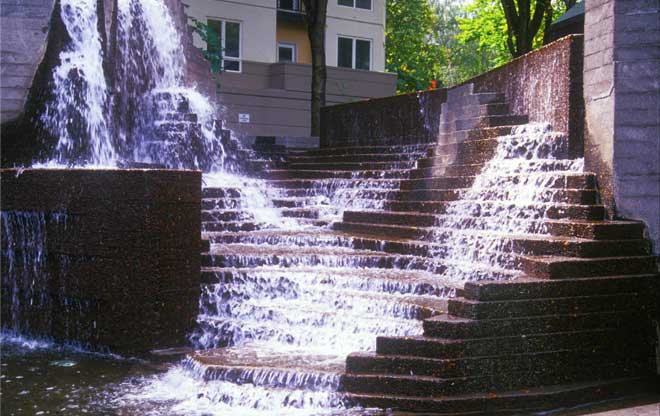
A Spring
Great water gardens use the vocabulary of terrestrial water systems in the natural environment. The water source flows into a channel, often accentuated by rapids and waterfalls, and finally to a resting place in a pool or basin, which is a metaphorical ocean or lake. Here, a basin represents a spring, as the water bubbles up and overflows.
Image: Kenneth Helphand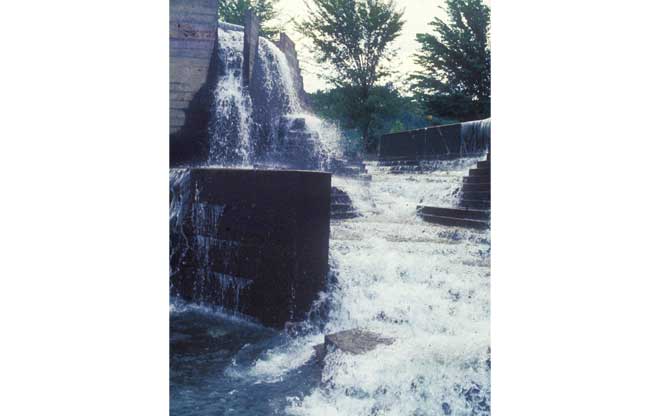
The Cascade
Highlighted is the cascade, where water gushes, sprays, glides, flows, and spurts over stepped, zigzagging, angular forms. The influence of natural waterfalls is clear, but its human design and construction is also strongly visible. Most visitors will be content to gaze at the water, but the steps can be climbed. Kids even ride bikes down its steep, stepped incline.
Image: Kenneth Helphand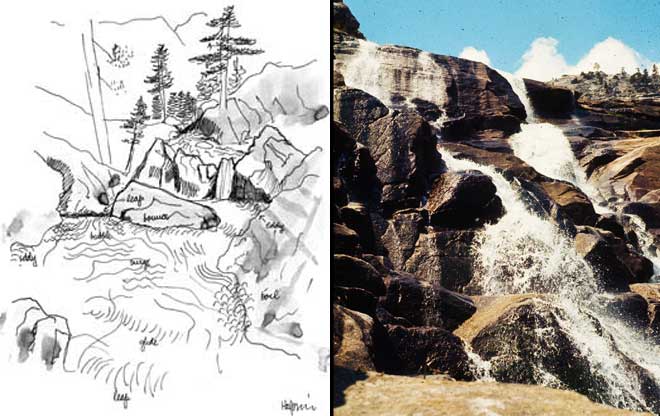
Sketches of Nature, Distilled to Their Essence
Halprin drew inspiration for the Lovejoy and Forecourt fountains from his life-long studies of water in the Sierras, as shown in his notebook drawings. In lieu of precisely replicating those environments, the fountains abstract their forms with concrete construction, both condensing and distilling these mountain landscapes. The streams and cascades are squeezed into a kind of abstract miniaturization, extracting the landscape's essence and heightening the flavor of the experience.
Image: Lawrence Halprin / Kenneth Helphand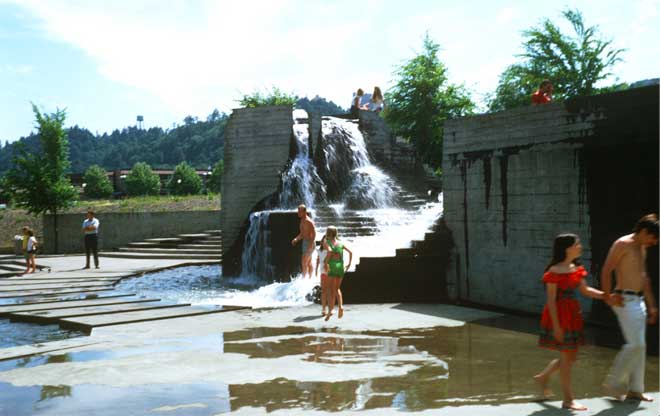
Water Flow
At the base, the water bubbles then pass through stepping stones that allow one to get close to the fountain. The water then collects in a large pool that also frames the scene.
Image: Kenneth Helphand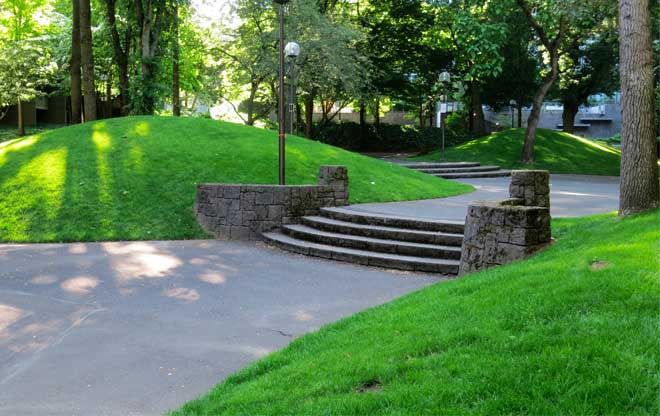
A Soft Interlude
Pettygrove Park is a mounded green interlude on the pathway between the fountains. Its soft forms contrast with the high drama of the fountains.
Image: Kenneth Helphand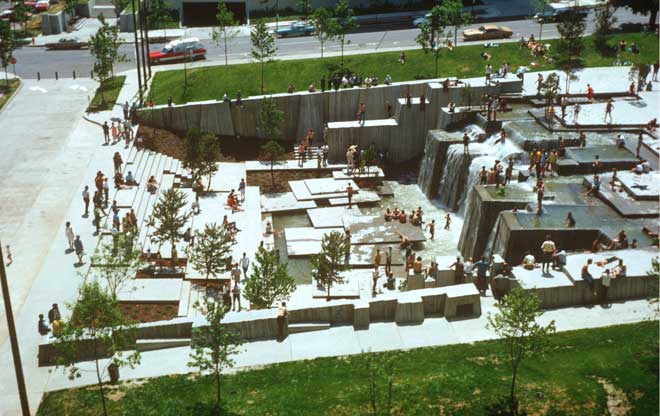
Civic Space
Forecourt Fountain -- now called Ira Keller Fountain -- encompasses an entire 40,000 square foot city block. On three sides the fountain is framed by a dense plantings of shore pines on raised berms, shown here as saplings shortly after original construction. The fourth side, across from Keller auditorium, is open to the sidewalk.
Image: Kenneth Helphand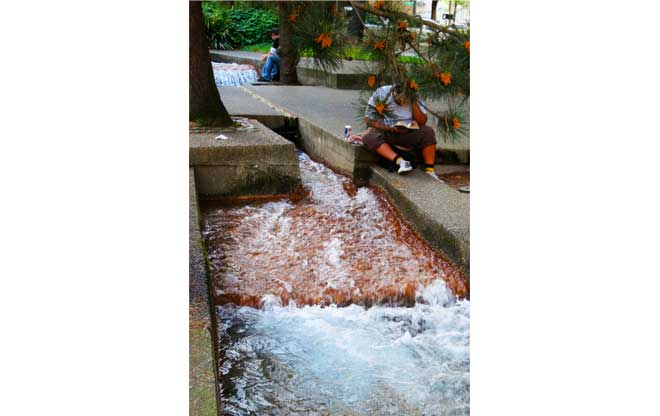
Bonsai-like
While most will approach the fountain from the front, arriving at the fountain from above is like walking through a miniature forest, almost Bonsai-like in character. Here in the upper plaza, water emerges from beneath the pavement, as if springs were excavated beneath the city surface.
Image: Kenneth Helphand
Get Wet
Water channels with pebbled surfaces suggest tributary streams and lead to rectilinear platforms and pools, where the water cascades over like rapids. At 36 inches deep, the basins are a good depth for those willing to get wet. Their walls afford security.
Image: Kenneth Helphand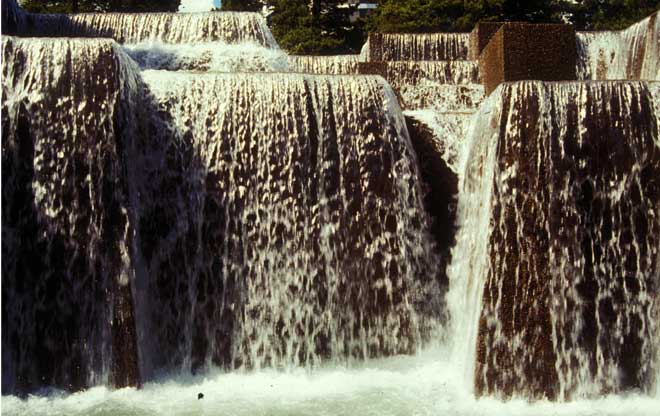
Cascading Sheets of Water
Like a mountain stream, the water abruptly spills over monolithic concrete blocks up to 18 feet tall into the basin below. Some 13,000 gallons of water per minute form great veils. It's dramatic, loud, and, for first time visitors, mesmerizing, for it's such an unexpected sight in a city. Like any grand waterfall it demands attention to watch its ever-changing display.
Image: Kenneth Helphand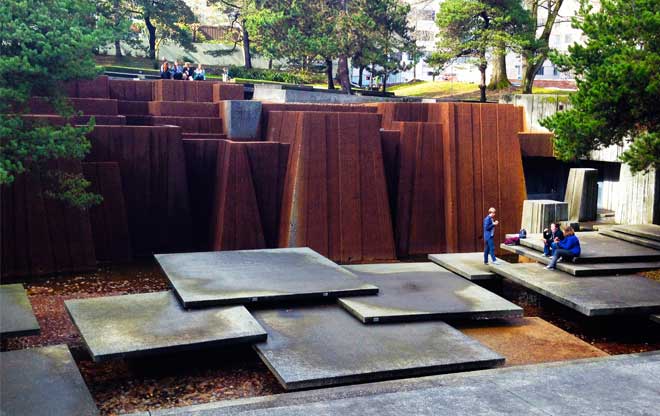
American Icon
The plaza steps across from Keller auditorium create an amphitheater to view the fountain's performance. At the base of the falls, overlapping platforms function as a stage where anyone who walks across becomes an actor in the unfolding drama. You can also walk behind a portion of the falls, where water tumbling down steps recalls fish ladders of Pacific Northwest rivers. But the inspirations came from across the continent: When the water is turned off, the entire complex echoes both Mesoamerican pyramids and the mesas and cliffs of the Southwest.
Image: Kenneth Helphand